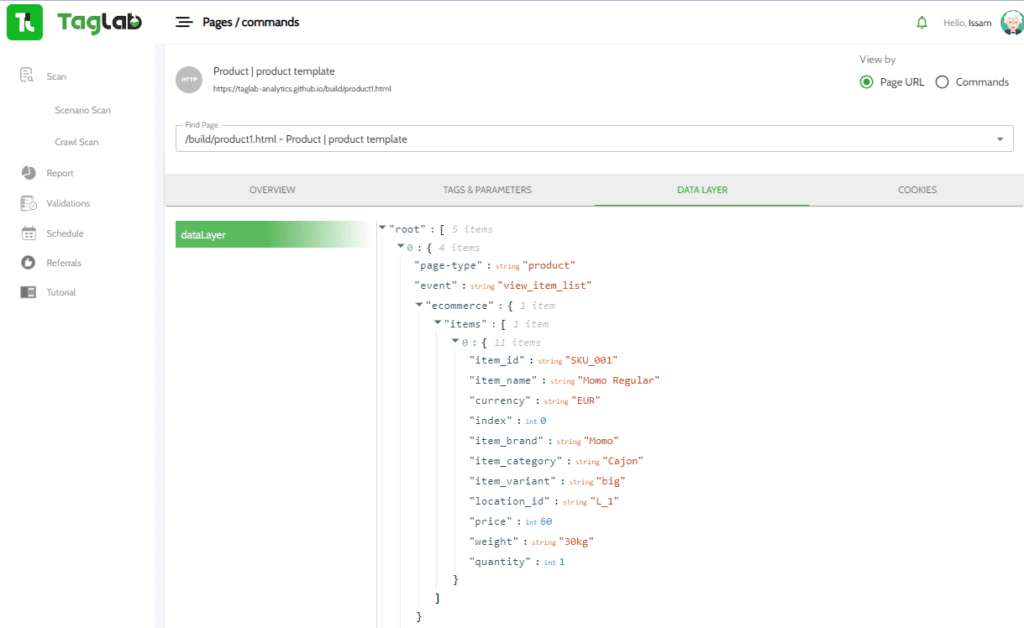Your cart is currently empty!
Guide to Data Taxonomies in Digital Marketing with TAGLAB
Posted by:
|
On:
|
What is Data Taxonomy?
A data taxonomy is fundamentally a structured classification scheme that divides data pieces into hierarchical groupings according to common traits. It serves as the basis for the data’s orderly organization in the context of digital marketing. Consider it a road map instructing marketers on how to organize, tag, and gain access to data in their marketing databases and analytics tools.
The Crucial Role of Data Taxonomy in Digital Marketing
Data taxonomy is more than just a trendy term in the business world; it is vital to the field of digital marketing for a number of convincing reasons.
- Data Organisation offers a disciplined method for arranging a sea of data that is always expanding. As a result, finding, retrieving, and analyzing the data that they need to make wise judgements is made simpler for marketers.
- The Key Is Consistency Data taxonomy ensures uniformity across diverse marketing campaigns by imposing standardized naming conventions and categorization guidelines. This uniformity is essential for minimizing mistakes and clearing up confusion.
- Efficiency Improvement quickly accesses pertinent data with the aid of a well-designed data taxonomy. As a result, they save a lot of time and are better equipped to react quickly to shifting market dynamics and trends.
- Data-driven insights involved in data analysis and reporting are streamlined by a carefully constructed data taxonomy. This enables precise campaign performance measurement and supports data-driven decision-making.
Data Taxonomy Tools
A data taxonomy’s creation and upkeep can be difficult tasks. A wide range of instruments are available to streamline the procedure with data taxonomy best practices and increase its effectiveness:
- Data catalogues: For all types of data items, data catalogues act as complete repositories. They provide metadata and search features, enabling marketers to browse and find data quickly.
- Specialized taxonomy management software: This programme streamlines the development and upkeep of taxonomies. These tools frequently have features for teamwork, version control, and system integration.
- Data Governance Platforms: These platforms offer a comprehensive approach to data management that includes taxonomy development. They maintain taxonomies while ensuring compliance, data quality, and data lineage.
- Analytics and reporting tools: A lot of these applications come with built-in taxonomy management features. Directly within these systems, marketers may tag and categorize data, streamlining the analytics procedure.

Why TAGLAB Excels in Taxonomies
- Taxonomy experts are on hand at TAGLAB, which has a team of them. Their unmatched depth of knowledge and experience guarantees that clients receive the best advice and solutions.
- Customized Solutions: TAGLAB is aware that no two situations are the same. They collaborate closely with clients to create custom taxonomies that meet each client’s individual requirements and coordinate with their distinct business goals.
- Cutting-Edge Tools: TAGLAB makes use of the most recent data taxonomy tools and technologies to provide clients with cutting-edge solutions that boost productivity and effectiveness.
- Continuous Support: TAGLAB’s dedication goes beyond the development of taxonomies. They offer continuing assistance and upkeep, making certain that taxonomies adapt to shifting corporate needs.
- Comprehensive Services: TAGLAB provides a full range of services to help clients through every step of the taxonomy journey, from taxonomy design to implementation, documentation, and training.
 The Role of Marketing Data Taxonomy
The Role of Marketing Data Taxonomy
A well-defined marketing data taxonomy is essential for expediting numerous operations in the changing world of digital marketing. Campaigns are organized using a marketing data taxonomy, which groups them according to characteristics like campaign kind, target audience, and location. The tracking and performance evaluation of campaigns are made easier by this category. Modern marketing is centred on personalization. A marketing data taxonomy aids in the definition and management of client segments, enabling the development of customized offers and content that appeals to particular audience segments.
Content can be categorized by format (e.g., blog post, video, infographic), topic, and distribution channel using a well-structured marketing data taxonomy, making content management and distribution more effective. Marketers can efficiently manage and report on important metrics like click-through rates, conversion rates, and return on investment (ROI) with the help of a clear marketing data taxonomy. A marketing data taxonomy helps to categorize and manage sensitive consumer data in an era of strict data protection legislation like the GDPR and CCPA, assuring compliance with legal obligations.
Data taxonomies are the unsung heroes of digital marketing because they give data the structure and organization it needs to be used effectively. Businesses can confidently navigate the data taxonomy environment by following best practices, utilizing the appropriate tools, and teaming up with specialists like TAGLAB.
Read Further
What is a marketing taxonomy and how does it structure and organize marketing data for analysis?
How to Create an Effective Marketing Taxonomy for Your Business
Enhancing Content Marketing for Web Analytics & Digital Marketing



